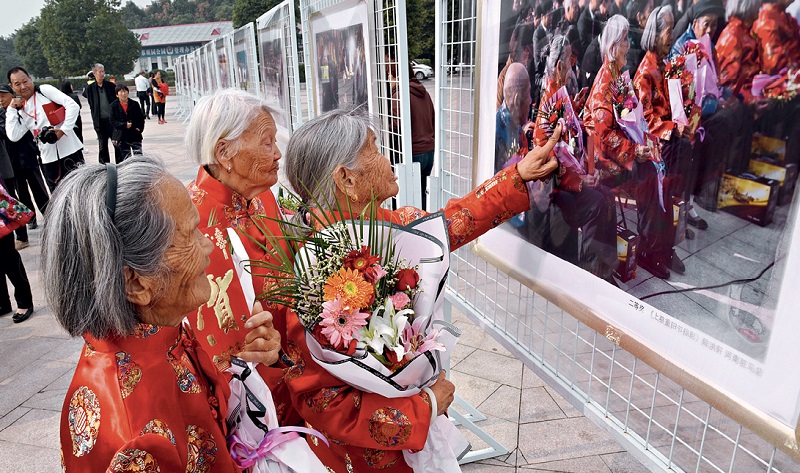
The opening ceremony of the 16th Shangcai Chongyang Cultural Festival is held at Caimingyuan Square in Shangcai County, Zhumadian in Henan Province on October 16, 2018.
The traditional Chongyang Festival — also known as the Festival of the Elderly — falls on the ninth day of the ninth month of the lunar calendar. Legend has it that during the Eastern Han Dynasty (25-220), there was a Taoist named Huanjing, whose hometown, Shangcai, now a county in north China’s Henan Province, was ravaged by plague and people were living in miserable conditions. On the ninth day of the ninth lunar month, Huanjing brought dogwood twigs and chrysanthemum liquor back home to relieve his hometown of its suffering.
Huanjing led villagers up the highest hill in Shangcai, and asked them to attach dogwood twigs to their clothes and drink chrysanthemum liquor in an attempt to drive away evil spirits. For more than 2,000 years since then, every year on the “double ninth day,” Shangcai residents clamber up high hills wearing dogwood plants, and savor chrysanthemum wine. Following thorough studies by relevant organizations in modern era, Shangcai County is now known as the “Hometown of Chinese Chongyang Culture.”
Duke Cai’s Wanghe Tower is regarded as the birthplace of the Chongyang mountain hiking custom. The tower is located on the western section of the ancient city wall of the Cai State (1046-447 BC). As the rivers in Shangcai often flooded, the duke ordered a tower to be built on the city wall overlooking the river notorious for overflowing, which is also how the lookout tower got its name of Wanghe (literally meaning “overlooking river”). As time went by, the people of Cai developed a custom of hiking to the tower and enjoying the beautiful surrounding scenery. During the Eastern Han Dynasty, Lord Cai’s Wanghe Tower became a must-visit site to ascend to a high elevation to observe the Chongyang Festival. Literati from all over the country gathered here to compose poems, leaving behind a trove of remarkable poetry. Now on the occasion of Chongyang, visitors throng to the area to enjoy the natural landscapes and to take in the rich historical ambience on the ancient wall of the Cai State.
The Dogwood plant is the star during the Chongyang Festival. This plant is a small evergreen tree, growing in most parts of China. Its edible fruit has a spicy flavor, and its stems and leaves can be used in medicine to relieve pain and regulate the flow of Qi, or energy. Many women and children wear dogwood branches on their arms, or decorate their hair with it during the festival. In addition to fastening the leaves and twigs of the plant on their bodies, Shangcai residents also stuff dogwood in sachets that come in various shapes and are embroidered with all kinds of vivid patterns like birds and flowers symbolizing different meanings of luck.
In 2011, Shangcai’s distinctly unique Chongyang Festival and its customs were recognized as an item of national intangible cultural heritage. The region has organized the Chongyang Cultural Festival every year since 2003, which incorporates many modern activities to enrich the lives of the elderly.